Ipomoea lobata
It’s no wonder the flowering Spanish flag is sometimes called firecracker vine.
It shoots up quickly, growing as much as 10 feet a month. After it races up trellises and fences, soaring 10 to 20 feet into the sky, it launches a burst of attractive graduated orange-red and cream flowers.

We link to vendors to help you find relevant products. If you buy from one of our links, we may earn a commission.
As the blooms gradually turn completely cream-colored, they will inspire oohs and ahhs from late summer up to the first frost.
Properly classified as Ipomoea lobata, Spanish flag is also known by two former scientific names, Mina lobata and Quamoclit lobata, and by a colorful array of other nicknames including exotic love vine.
Its most recent Latin name, Ipomoea lobata, places Spanish flag in the morning glory family.
This moniker is particularly distasteful to many gardeners because, while indeed being botanically related to Mexican morning glory (I. tricolor), common morning glory (I. purpurea), and others in the Ipomoea genus, firecracker vine’s flowers are not funnel-shaped and look unlike morning glory flowers.
Many gardeners simply call this plant “Mina lobata.”
Let’s learn more about this glamorous dazzler and see if it might suit your next privacy fence, border, or even a large container for the patio. Here’s what to expect:
What You’ll Learn
What Is Spanish Flag Vine?
Native to Mexico, I. lobata was originally named in honor of Spanish explorer Francisco Xavier Mina in 1824 and introduced to Europe that same year.
Some 60 years later, in 1887, it made its way to the US via a German seed house and has enjoyed varying degrees of popularity here ever since.
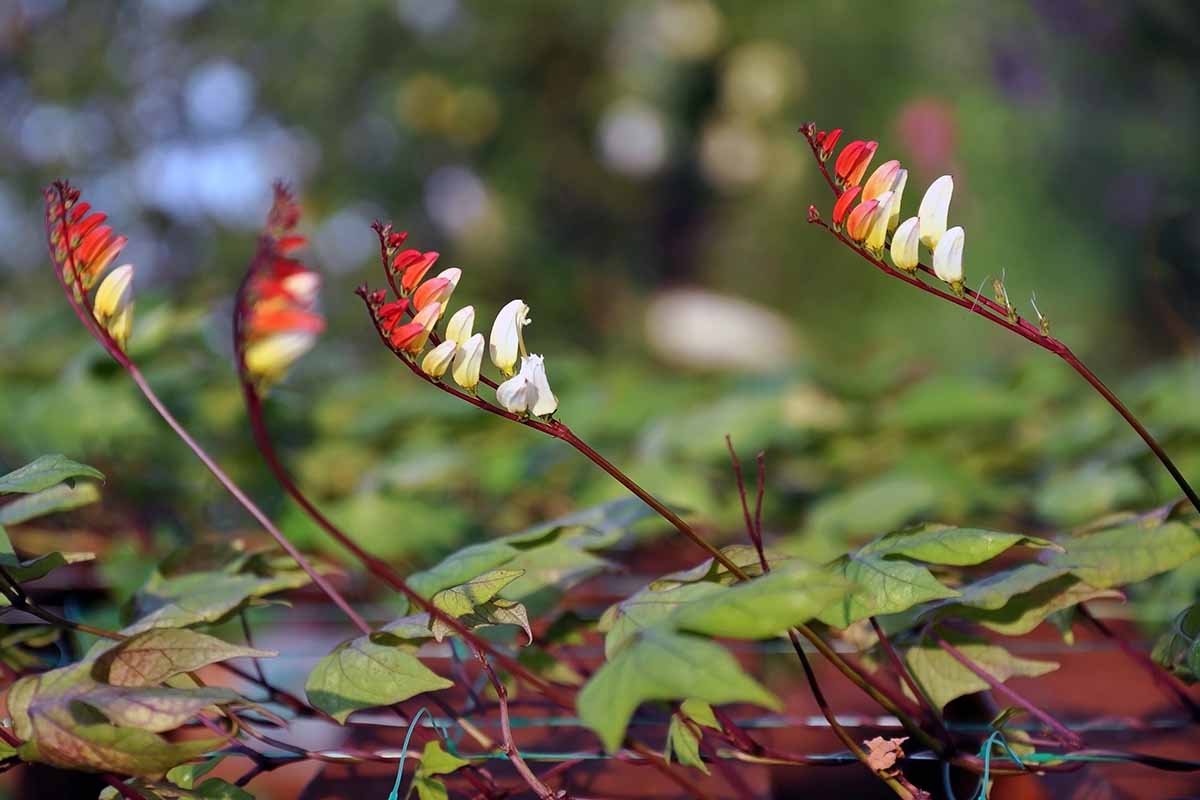
Cultivated as an annual in some climates, in others Spanish flag is characterized as an invasive plant – much like its cousin, the morning glory – due to its speedy and aggressive growth habit.
It typically flowers from late summer through autumn, making it an attractive addition to colorful fall landscapes.
In the southern US, this vine will overwinter quite well, whereas northerners will have to plant afresh each summer.
The flowers emerge a bright red to deep orange color. As they grow larger, they fade to pink, pale orange or yellow, and finally cream.
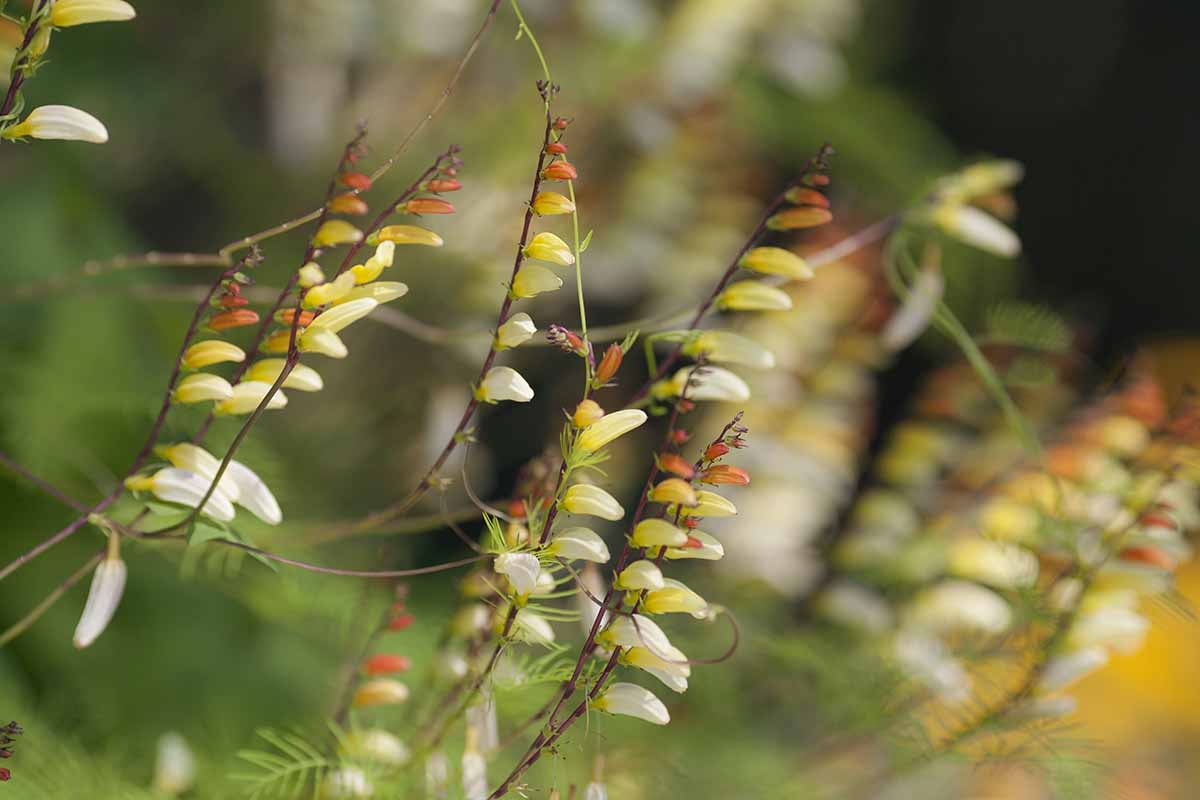
As they age and change colors, the blossoms remain vertically arranged on one side of the stem as new red blooms are produced at the top of the floral stem.
This results in a stunning cascade of colors that exhibit the flag-like appearance for which the plant is known.
Though just one flower on a stem generally becomes fertile at a time, thrusting out pistil and stamens, the flowers’ nectar attracts hummingbirds and bees.
Not content with run-of-the-mill green foliage? This morning glory family member produces bronze-purple, deeply lobed leaves that mature to a deep green.
These leaves are shed as the season progresses, so you might want to plant low-growing screen plants in front of the base of the vines.
This polychromatic delight also proudly sprouts showy purple stems.
Spanish Flag Plant Propagation
You’re not likely to find Spanish flag starts at the local nursery, so starting them from seed is usually the best bet.

If you want an advantage, start seeds indoors. Sow them in a premoistened seed-starting mix about a quarter-inch deep at least six weeks before transplanting outside. You’ll wait to do that until after all danger of frost has passed in your area.
Ordinary seed-starting mix works fine, or you could use potting soil, but don’t use ordinary garden soil or you may encourage disease or poor drainage.
The coats on firecracker vine seeds are tough – another reminder that they are members of the morning glory family. To soften the shells and hasten germination, soak the seeds in plain water for 24 hours before sowing.
Give each seed its own one- or two-inch cell or space them two inches apart in a shallow tray. Keep the seeds moist and the temperature between 65 and 70°F until they sprout. This can take five to 20 days.
Once the seedlings push through the growing mix, immediately move them to a sunny window or place the tray beneath a grow light.
They’ll be ready to plant out a week or two after the average last frost date, once the soil is 55°F and the air is at least 65°F. Wait until they have at least two sets of true leaves, and harden them off gradually to adjust to the outside light and temperature.
To transplant, dig a hole the same size as the cells of the current container, place the main stem at the same depth, and backfill with more growing mix. Water in thoroughly and get ready for speedy growth to commence!
You can also direct sow the soaked seeds outdoors when freezing temperatures are a winter memory, being careful to space them at least a foot apart if you don’t plan to thin the seedlings.
How to Grow Firecracker Vines
When choosing a spot to grow a Spanish flag, make sure it will have enough room to spread a foot or two and enough support to reach its mature height of six to 20 feet.
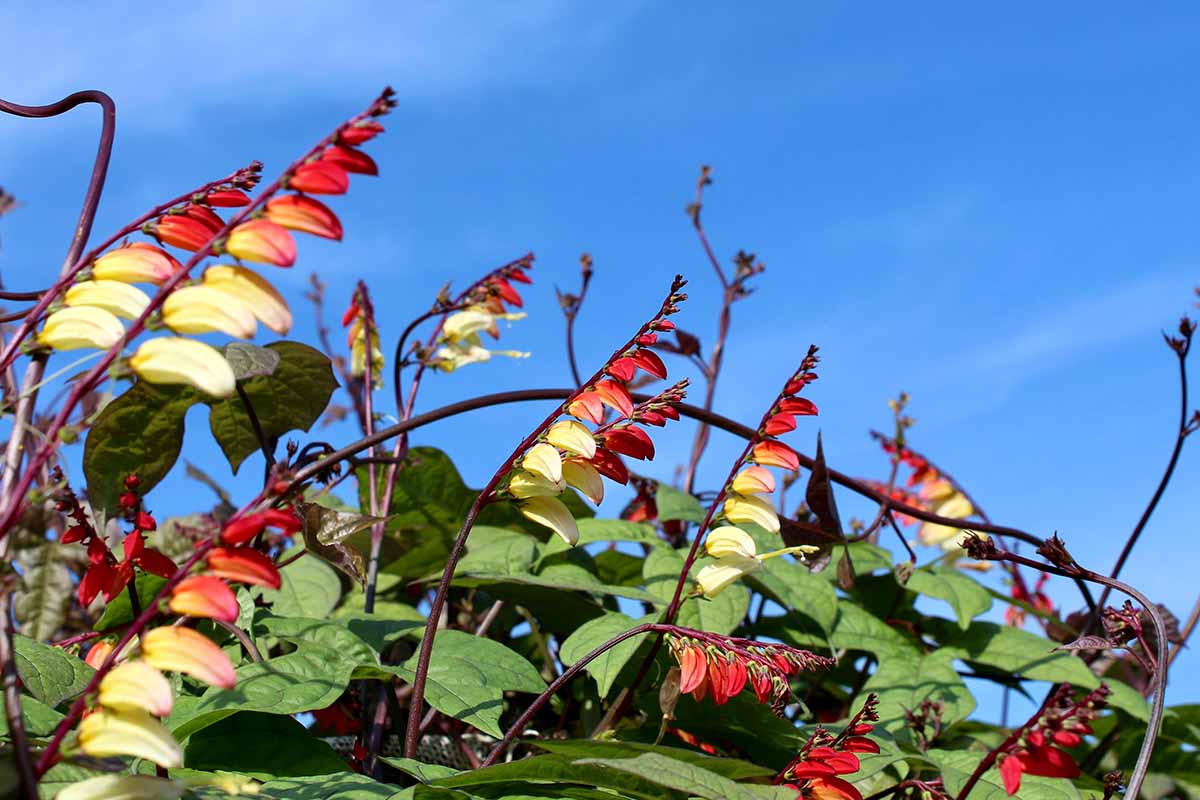
The vines also prefer full sun, and will flower sooner with six to eight hours of direct sunlight daily. They will also tolerate a bit of shade, though you shouldn’t expect as many flowers.
If you plan to enjoy the pollinators and hummingbirds that mob this flowering vine, be sure to plant it on a site at least 10 yards from anywhere that you or a neighbor is using insecticides or herbicides.
Heat is no problem for Spanish flag, but it does appreciate rich, moist, well-drained soil. It can thrive in a range of pH levels from 6.0 to 8.0, which includes soils that are somewhat acidic to neutral to somewhat alkaline.
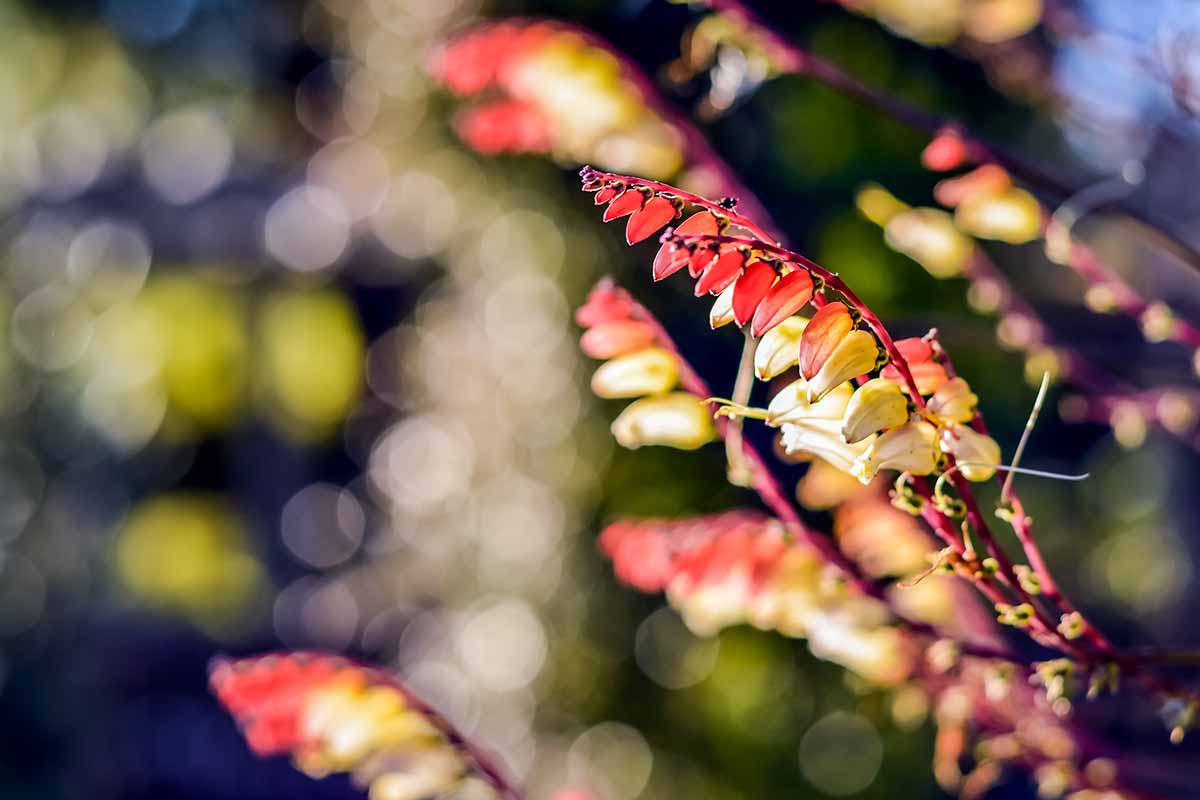
Firecracker vine also makes an attractive container plant if you give it something to climb on and keep the soil moist.
The pot must hold at least seven gallons, and make sure it’s made of a water-retentive material and that it has drainage holes in the bottom.
Read our guide to learn more about selecting the best material for planters and containers.
Once the plants are in the ground, they’re easy to care for.
You will want to supplement their water during dry spells, using a watering can or the hose to provide an inch or so of water at the soil surface, not sprinkling it above the leaves.
Provide your vines with a high-nitrogen fertilizer at the beginning of the growing season, and switch to a high-phosphorous mixture before the plant blooms.
Growing Tips
- Plant in full sun.
- Provide a trellis or fence at least 10 feet tall.
- Fertilize with a high-phosphorous fertilizer when the plants form buds.
- To protect pollinators drawn to Spanish flag, don’t use insecticides or herbicides nearby.
Pruning and Maintenance
Like most annual vines, I. lobata doesn’t require pruning to grow tall and spread about a foot or so.
You may need to train the runners up your selected supports, but only if they start sprawling along the ground.
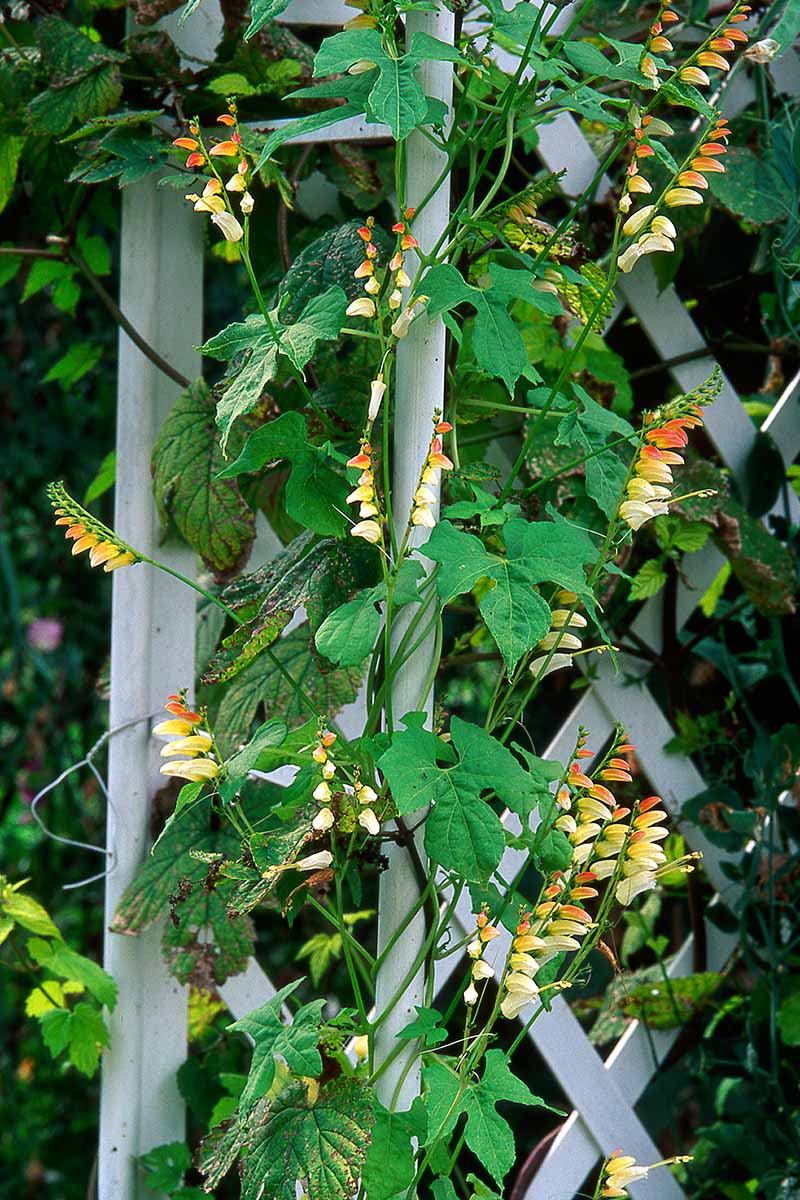
It’s pretty easy. Once they’re six to eight inches long, gently entwine the runners with the lowest parts of the supports. Or tie them to the bottom juncture of the trellis or fence with a loose bow of biodegradable twine.
Usually, though, they’ll find the supports on their own, seemingly growing a foot or more overnight.
Beyond that, mid- to late season care involves fertilizing when the plants form buds and enjoying the flowers as they fly their colors, later becoming cream-colored flags waving in the wind.
At season’s end, clear the plant debris to discourage insect pests from overwintering in the dead vines. Only compost the remains if you’re cool with a seed or two sprouting in the composted soil next season.
Not a fan of vines that self-sow? You may want to make the extra effort of clipping the stems in mid-fall once the blooms have faded and the flower heads start forming seeds.
While this ornamental vine is nowhere as invasive as its morning glory relatives, it can reseed and sprout the next year in available soil.
Where to Buy
You can find Spanish flag in 100-seed packets available from Outsidepride via Amazon.

Otherwise, check nurseries in your local area for seeds, or possibly starts.
Managing Pests and Disease
These flowers are deer-resistant, and insect pests are typically minimal. Watch for red spider mites and whiteflies, and treat with insecticidal soap or diatomaceous earth if necessary.
Spanish flag doesn’t usually have trouble with disease, particularly when planted in well-draining soil with ample space between vines.
But you may encounter white blister, rust, or fungal leaf spots. You can use a fungicide to combat these diseases.
Best Uses for Spanish Flag Flowers
This is a showy bloomer with beautiful colors that flowers in late summer through fall, just as many other annuals are fading out.
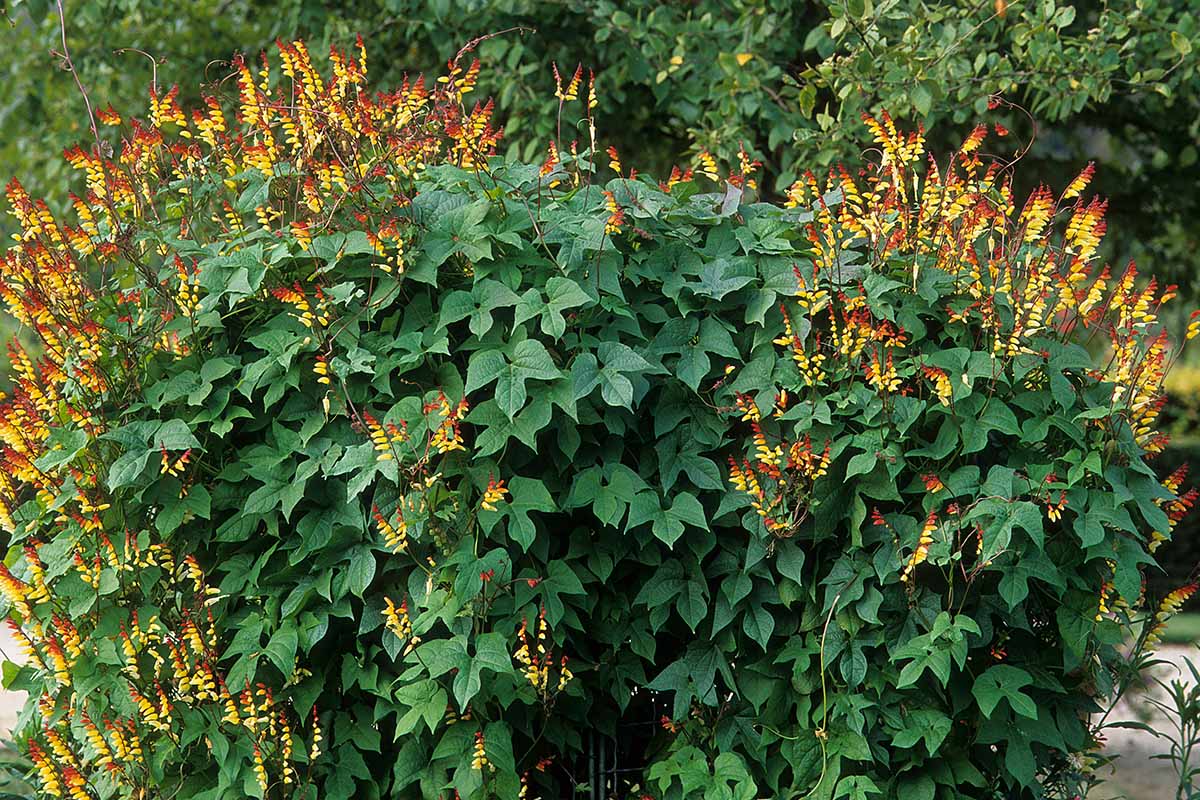
Due to its height and need for support, the best use for the showy firecracker vine is at the back of a border or as a focal point growing against a wall near the patio, sidewalk, or porch.
It’s also invaluable as a quick-growing privacy screen.
And if you are willing to water a couple of times per week in the heat, find a large container, and place it near a suitably tall and strong support. Spanish flag can also create an impressive display of color in a container.
Finally, when choosing vines to suit your garden or landscape, remember this ornamental vine’s appeal to pollinators.
Plant it somewhere our flying and buzzing friends can access the blooms for nectar that’s also near a source of shelter and water.
The bees, butterflies, and hummers will find food, and you’ll enjoy the burst of color and the sight of the beautiful wildlife feeding at the same time.
Quick Reference Growing Guide
| Plant Type: | Herbaceous perennial vine mostly grown as an annual | Flower/Foliage Color: | Orange-red, magenta, yellow, cream/green, sometimes purple-tinged |
| Native to: | Mexico | Water Needs: | Moderate |
| Hardiness (USDA Zones): | 10-11 | Maintenance: | Low |
| Bloom Time: | Late summer, fall | Tolerance: | Part shade |
| Exposure: | Full sun | Soil Type: | Nutrient-rich |
| Time to Maturity: | 60+ days | Soil pH: | 6.0-8.0 |
| Spacing: | 18-24 inches | Soil Drainage: | Well-draining |
| Planting Depth: | 1/4 inch (seeds), even with soil surface (transplants) | Attracts: | Bees, butterflies, hummingbirds |
| Height: | 10-18 feet | Uses: | Back of border, container, privacy fence, trellis |
| Spread: | 1-2 feet | Family: | Convolvulaceae |
| Growth Rate: | Fast | Genus: | Ipomoea |
| Common Pests and Disease: | Red spider mites, whiteflies; fungal leaf spot, white blister | Species: | Lobata |
A Fence of Many Colors
This fast-growing, tall vine dazzles with its unusual spray of colorful blossoms. Imagine a sun-splashed fence quickly covered in showstopping hues – your neighbors will turn green with envy.
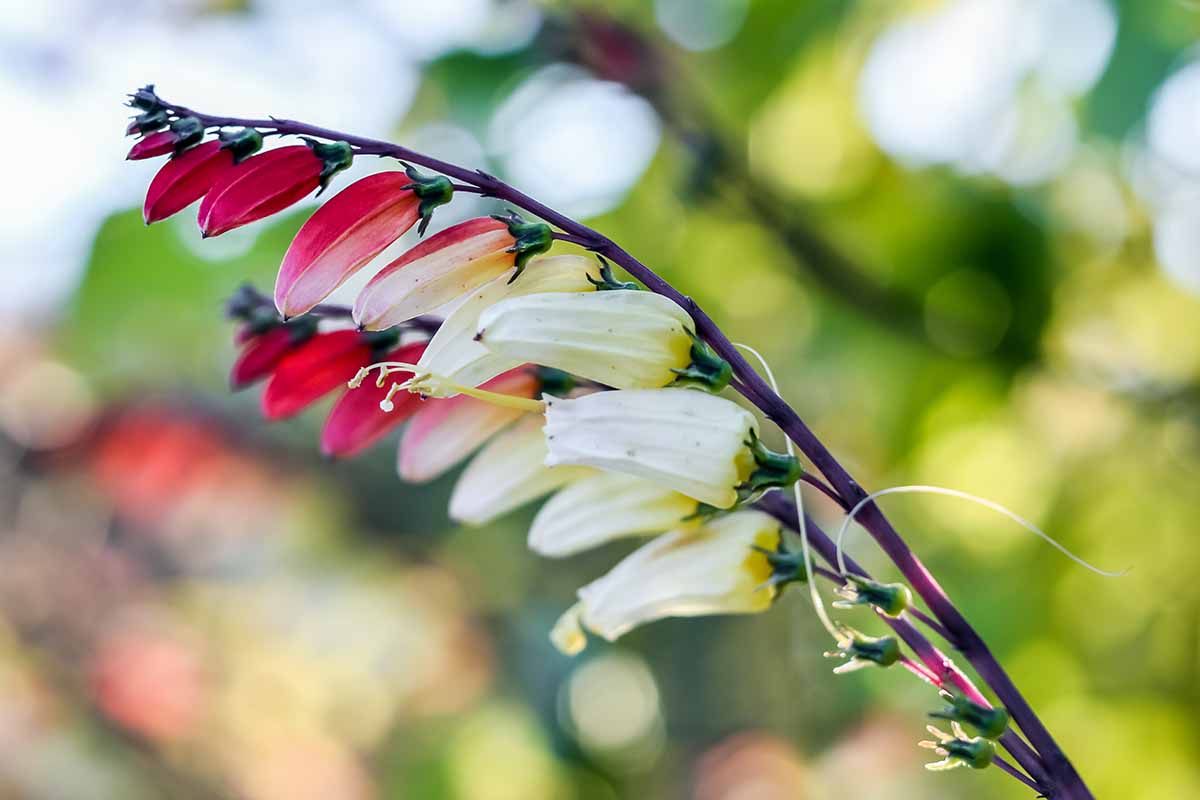
Some rich dirt, some water, and perhaps a little fertilizer – not too much to ask for an unusual carmine display well into autumn, is it?
Are you growing I. lobata? Share your thoughts in the comments section below.
And if you’re a newbie or veteran ornamental fan, read these flowering vine guides next to enhance your gardening experience:




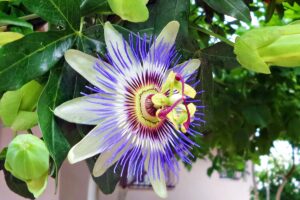
I first saw Mina Lobata in a National Trust property where 8 plants had been grown on a wigwam of canes. The effect was a pillar of fire.
I plant mine like this each year.
The seeds are expensive and don’t always germinate but it is really worth a try.
Alison Faulkner, I love the sound of this! I’ve seen something similar done with giant sunflowers for a kids fort, but never with a vine that has lovely foliage, too. Just curious, do you soak the seeds before planting? Thanks for sharing this creative idea.
I find these among some of the easiest seeds to germinate! Soak one night and put in heated propegator. 9 out of 10 germinate after just a few days. First year that I’ve tried, can’t wait for the flowers! Thanks for the article
Glad to hear confirmation that the seeds are easy to propagate. Thanks, Joost.